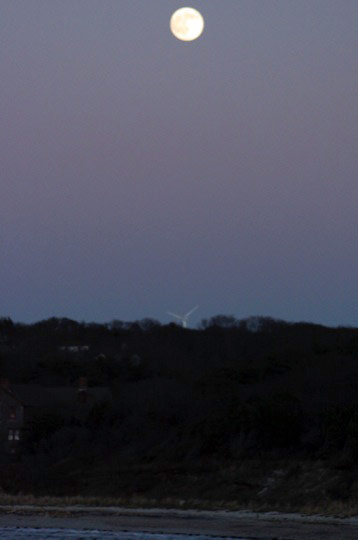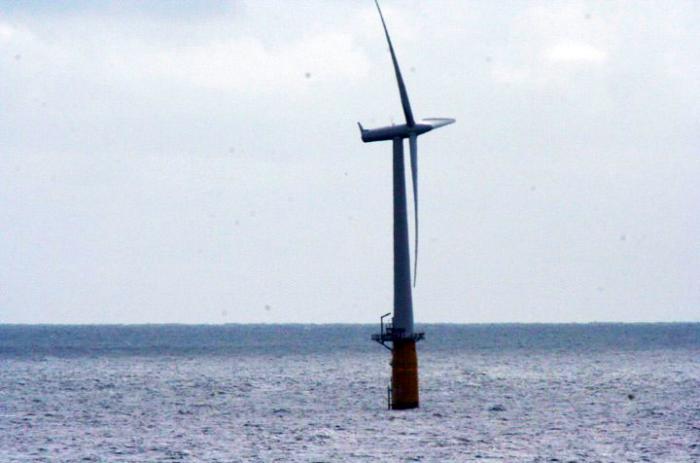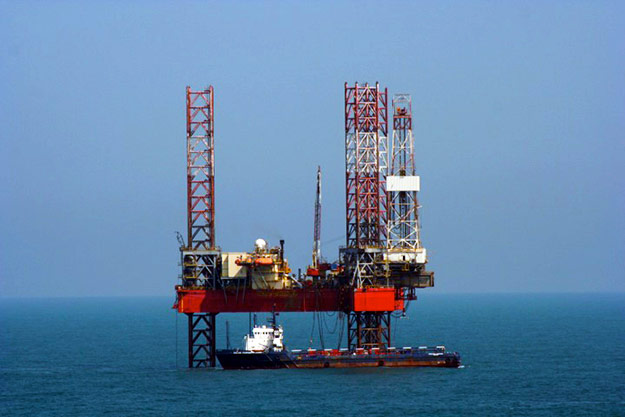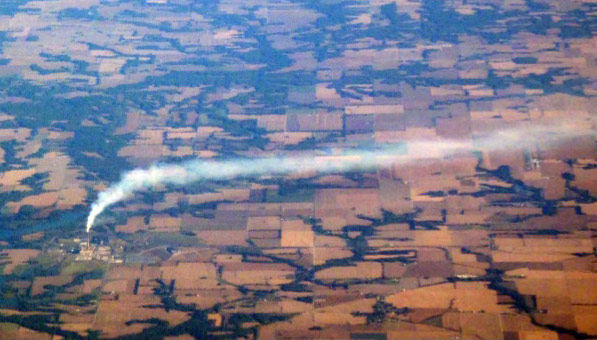Policy Pile-On
In the previous module, we looked at the basic economic analysis showing that the world’s people will be better off if the solid scholarship on energy and environment is used efficiently. And, we mentioned that if we are close to being influenced by limits to growth, then the motivation to use the scholarship is stronger. Earlier in this module, we looked at some of the ways that policies can be used to address these issues. Next, we will briefly consider a number of issues that influence policy choices, including national security and price stability.
Extinguishing Externalities:
Any energy source that supplies a significant fraction of human use is almost guaranteed to have “externalities”—unintended consequences for people and other living things. Solar farms in the desertmay shade the habitat of cacti and tortoises, wind turbines kill some birds and interrupt views, nuclear plants require long-term storage of potentially poisonous waste, fracking produces “flow-back” fluids containing possibly harmful chemicals that must be disposed of, and so on. Realistically, we have no practical hope of an energy system that doesn’t involve unintended costs and “Not in My Back Yard” (NIMBY) issues.

But, several studies have found that wind turbines are not nearly as deadly to birds as cables on radio towers, skyscrapers, cats, or the climate changes from fossil fuels that will be avoided by use of wind turbines (see Enrichment on the next page).


Want to learn more?
Read the Enrichment titled Living with Wind Turbines and Coal Exhaust.
In general, the externalities of renewable energy are quite low—covering thedesert with solar cells does not use the most productive landscape, and covering roofs with solar cells replaces one human-made surface with another that has essentially the same effect on neighbors, except it generates electricity.

In contrast, recent scholarship shows that coal-fired electricity as currently practiced in the US and some other places (parts of China, for example) has very high negative externalities, from issues such as particles and mercury causing health problems. Some studies for the US (see Enrichment) have indicated that for each dollar spent by consumers on coal-fired electricity, society spends a similar amount, or more, in lost health and environmental quality. Hence, these studies indicate that there would be economic gains from additional regulations or other policy actions to clean up or reduce coal burning, even if the effects on climate change are ignored.
 Earth: The Operators' Manual
Earth: The Operators' Manual
Video: Yes in My Backyard (aka YIMBY!) (9:08)
To see how people in Denmark and Texas came to welcome the wind into their backyard, you can watch this clip. Beauty really may be in the eye of the beholder, and things that pay the beholder good money may look just a little more beautiful.
Narrator: Are there other examples of communities and nations that have begun the transition away from fossil fuels? What does it take to welcome the turbines and solar farms of the new energy system, and say, "Yes, In My Backyard." This is the story of two communities that at first look very different. Samso is a small island off the Danish mainland. West Texas is a vast, dry expanse in America's South. What both have is abundant wind. At times, Samso produces more electricity than it uses, exporting surplus power to the Danish mainland. And Texas wind now generates as much power as the next three U.S. states combined. Samso and West Texas both solved the NIMBY, not in my backyard challenge that has stymied so many renewable energy projects. It's not easy, but with patience, and persistence, and the efforts of the right people, it can be done.
Soren: Okay-- My name is Soren Hermansen, and I am the Director of the Samso Energy Academy. Samso means, in Danish, means the Meeting Island-- when you make a circle around all of Denmark, then Samso is right in the center of the circle.
Narrator: But it wasn't geography that brought Lykke Friis, then Denmark's Minister of Climate and Energy, here in mid-2011. It was why and how this community had turned NIMBY into "Yes, in my backyard."
Lykke Friis: Well, Samso is a pioneering project, in the sense that Samso, way back, decided that Samso should become independent of fossil fuels.
Narrator: Before its transformation, people thought of Samso as just a cute tourist community, busy in summer, empty and desolate in winter. Now people come here not just to see the turbines, but to understand the process that got the community to welcome wind energy. After a national competition, Samso was selected by the Danish government to be a proof of concept for how to transition from fossil fuels. But it was up to individuals like Soren Hermansen, with the passion and skills to effect change, to figure out just how.
Soren: So when we won, the normal reaction from most people was, "Yeah, you can do this project, that's OK, but just leave me out of it."
Narrator: Samso has a deep attachment to its past and values its traditional way of life.
Soren: But gradually we won their confidence in establishing easy projects to understand, and also easy projects to finance. Because basically it's all about, "What's in it for me?" Because it's not convinced idealists or green environmental hippies who lives here.
Narrator: Soren, a native of the island, convinced some of his neighbors to become early adopters. They found success, and spread the word. Jorgen Tranberg operated a large and profitable herd of milk cows. After initial reservations, he invested in a turbine on his own land. When that went well, Jorgen became part owner of one of the offshore turbines.
Soren: Farmers, they have to invent new things and be ready for changes. So when they see a potential, they look at it, no matter what it is. They look at it, say, "Could I do this?" And if they see fellow farmers do the same thing, they are quick to respond to that. So even being very traditional and conservative in their heads I think they have this ability of making moves and do things, because they have this independency in them. A farmer is a free man-- maybe he owes a lot of money to the bank, but he's still a free man in his thinking.
Narrator: It was seeing what was in it for them and for their community, that won over landowners in West Texas. And it took one of their own, a man whose family had deep roots in Roscoe's cotton fields, to educate them about wind farming. Cliff Etheredge: Well, I'm really a farmer-farmer, you see. I farmed for almost over 40 years. We're in-- right in the middle of the Roscoe Wind Farm. And we've got about 780 megawatts of production, that's per hour, enough electricity for about 265,000 average homes.
Narrator: Roscoe had no oil and faced hard times in the early 90's, but it did have wind.
Cliff: When this land was acquired there was absolutely no value to the wind. Fact is, it was a severe detriment, because of the evaporation of the moisture.
Narrator: Cliff, like Soren, had to work with his neighbors to get them ready to accept wind turbines.
Cliff: The first thing farmers want to know is, "Well, how much is it going to cost me?" It costs them nothing. "What's it going to hurt?" Three to five percent of your farmland is all it's going to take up. You can do what you want to with the rest of it. Then it came down to, "Well, how much money is this going to make me?"
Narrator: Cliff did his research and checked his numbers with wind experts and the Farm Bureau.
Cliff: Then I was able to go to our Landowners' Association and show them, where they had been receiving 35 to 40 dollars an acre, then the landowners could expect somewhere in the neighborhood of three times that.
Narrator: In fact, farmers stand to make 10 to 15 thousand dollars a year, per turbine, just from leasing the wind rights.
Cliff: There was no guarantees in it from the very beginning, but sure enough we've got, I think, in the neighborhood of 95 or more percent of our area that accepted the wind farm.
Narrator: In both Samso and West Texas, individuals saw economic benefits. But the whole community, beyond the investors and land-owners, benefited too.
Cliff: Because of the wind farm, now, and the people working in the wind industry, now we've got jobs available and opportunities for young people to come back from college or from technical school or from whatever. It's just been a Godsend.
Narrator: For Kim Alexander, superintendent of the Roscoe school district, that godsend translates into dollars.
Kim Alexander: In 2007, prior to the wind values coming on our tax roll, our property values were at about $65 million. And then, that wind development, they jumped to approximately $400 million, to $465 million.
Narrator: The school district will get more than $10 million dollars over a decade. That guaranteed revenue stream unlocked additional funding. School buildings, some dating from the 1930's, could be updated, and computer labs added.
Cliff: This is an indication to me of what can be done for rural areas, and will be done, all the way to Canada-- bringing life and prosperity back to these rural communities that are suffering just like we have.
Narrator: The same oil shock that got Brazil started on ethanol, got Denmark started on manufacturing wind turbines, just in time to compensate for a decline in its ship-building industry.
Lykke: And it's also good for the economy, in terms of export. I mean, 10% of Danish exports comes from the cleantech area.
Narrator: Energy and environment always require tradeoffs, such as clear vistas versus clean energy. It's something that communities have to make time to work through. Cliff, for one, believes it's worth it.
Cliff: Everything, the schools, the churches, the civic organizations, all the businesses will benefit from this. It will increase, hopefully, our town's populations, and our economics.
Kim Alexander: My granddad used to say, not realizing he was prophetic, but "If we could sell the wind, we'd be wealthy." Well, who would have ever thought we'd be able to sell the wind?
Narrator: For Samso, Denmark and Texas, clean energy brought economic benefits and energy security. But replacing fossil fuel emissions with wind power has other advantages.
Lykke: And let's not forget, also good for climate and health, and such, and that's a very important argument.
Cliff: We've got a constant wind resource here, that's tremendously valuable, and as opposed to oil and gas, it'll last forever, and it doesn't pollute anything.
Credit: Earth: The Operators' Manual. "Yes, In My BackYard" (aka YIMBY!)." YouTube. April 22, 2012.
